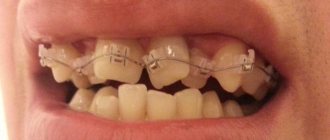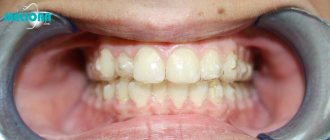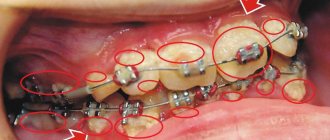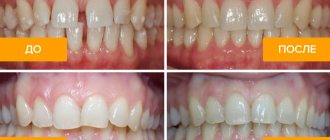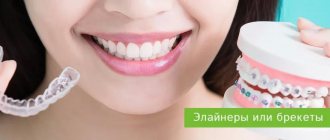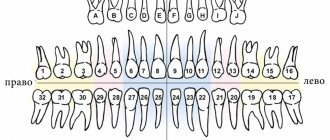In dental practice, in some cases, a procedure such as tooth grinding is used - the removal of a small amount of hard dental tissue to change the surface, shape or length of the tooth. Previously, such a procedure was noticeably uncomfortable and painful for the patient, but modern anesthetics and dental instruments have made it almost imperceptible.
Fangs made of plastic
To make vampire teeth at home, take a bowl, spoon and plastic chopsticks. You can also use ground plastic. Place the plastic in a medium-sized bowl and fill with boiling water. When the material begins to melt, carefully pick it up with a spoon so as not to get burned. Now the plastic has softened and is easy to change.
How to make vampire fangs at home from plastic nails?
Vampire fangs made from ordinary false nails are very convenient to produce and wear. Take nail tips, a file, scissors, nail glue, acrylic paint or white polish. From the set, you need to choose a pair of nails that are most suitable for your teeth. Most likely, these will be false nails for the little fingers. If the tips are too long, cut them off. Now use a nail file to give your nails a pointed tooth shape.
Causes of impacted teeth
- Due to injury or damage to the jaw;
- If the child’s primary fangs were pulled out prematurely;
- Incorrect location of the tooth germ;
- Dental crowding, which means teeth are too close together;
- Inflammatory diseases of baby teeth and gums;
- The presence of “extra” teeth (supercomplete);
- Poor nutrition;
- Rickets;
- Exhaustion or weakness of the body.
The main prerequisite for the appearance of retention is the peculiarities of the child’s development in the embryonic period (lack of minerals in the body, thickening of the mucous membranes, low fetal growth rate).
Apple Vampire Fangs
You're not going to a vampire themed party or Halloween, but just want to scare someone? Then you won't need scary vampire fangs glued to your own teeth. After all, the scare scam will take you very little time, and walking around with a foreign body in your mouth is not very pleasant. How to make vampire fangs without gluing them tightly? It's very simple, all you need is an ordinary apple! Only the fruit must be hard. Using a thin knife or an ink pen, you need to cut out two parts from the apple, close in size and shape to the cone. The parts just need to be put on your own teeth. But you can’t close your mouth with vampire apple fangs on your teeth. Saliva will simply ruin them. Putting on artificial teeth, quickly bring your insidious plan to fruition!
Fangs can also be made from cotton wool for a short time.
You can also use a plastic fork for this purpose.
Do-it-yourself fangs, molded from plastic
Another way to make fangs with your own hands is using plastic for modeling. Sets of various soft plastics are now widely available in stores. Using such a universal material, you can make excellent, beautiful and durable bloodsucker teeth. How to make vampire fangs at home? Of course, first buy a set of plastic. A particularly large selection is presented in stores for needlewomen involved in the fashionable hobby - handmade. Be sure to read the instructions on the package or consult the seller. Soft plastic has its own characteristics of use! Make fangs out of it that are as similar to real ones as possible. Put your imagination to work! After sculpting, immediately place the finished fangs on your own teeth so that they can adapt to the shape of the owner's jaw.
Read also: How to determine the error of a pressure gauge
Now you know that getting ready for a party or carnival can be quick and easy. Don't buy fangs in the store, but use your imagination and have a good time making the best vampire fangs.
Young people are trying to “keep up with fashion.” To achieve their goals, young people sometimes neglect the safety of their health. They strive to stand out from the crowd and be modern.
Informal teenagers, especially those who consider themselves goths, try to follow fashion and grow fangs. This can be done with the help of modern dentistry. This desire arises, in most cases, in adolescents aged 14–20 years.
It is rare to meet an older person who strives to grow fangs. Currently, tooth enlargement occurs using several methods.
As a result, the treatment option using aligners was unconditionally accepted
Why did the patient come to me with the problem of crowded lower teeth?
Still, my orthodontic experience is taking its toll, and recommendations are coming from grateful patients (thank them very much for this!). And in this case, the patient came on the recommendation of his sister, who was my patient several years ago with a very similar clinical situation in the oral cavity (narrowing, crowding of teeth nearby, slight crowding of teeth on the upper and lower jaws).
Did the patient know about the aligners?
Surprisingly, he was not motivated to get aligners. The patient knew about treatment with lingual braces (read on the Internet, saw it with friends), but he had never heard of treatment with aligners. I told him that there is a treatment method using transparent aligners (an alternative to braces), which need to be changed every 2 weeks. Aligners are more comfortable to get used to and wear than braces; oral hygiene does not suffer during treatment with aligners. And what is important, given how busy people are nowadays, is that the patient can visit the doctor less often than with braces. And as a decisive argument, when treating his crowded teeth with aligners, there will be no dietary restrictions.
Preparation for the treatment of crowded teeth is necessary in any case
The patient had already been examined by a therapist, treated all his teeth, cleaned them, understanding that he should have entered the treatment with normal teeth. The young man regularly visits a therapist once every six months (how rare is this to see), but nevertheless, the problem of dental aesthetics due to the incorrect position of the canine in the lower dentition began to grow.
The only additional thing that was done was teeth separation
. Separation is when we slightly carefully increase the interdental spaces by comfortable grinding, in a way that is safe for tooth enamel. During the entire period of treatment, five separations of incisors and premolars on the lower jaw were carried out due to crowding - to make room for the canine.
This is a very important point. And there is no need to be afraid of it, it is natural during the treatment process and absolutely comfortable.
What could be the motivation?
Fangs can be extended or restored for dental reasons or for beauty.
For medical purposes, canine extensions are necessary for the following purposes:
- the enamel is damaged or has microcracks;
- the tooth has damage from deep caries or the hard tissue has suffered mechanical damage;
- the tooth wears out with age;
- for defects that cannot be corrected aesthetically;
- There is pronounced pigmentation on the enamel.
In order to improve (change) their appearance, each person makes an independent decision about the advisability of growing fangs.
Over the past few years, this procedure has only gained popularity. Patients are confident that restoration of certain teeth can correct their facial expression and make their smile more mysterious and unusual. They are confident that they will acquire a certain charm and novelty.
In most cases, manipulations on the fangs are performed only for decorative aesthetics.
Why do you need to grow fangs?
The main task of the dentist is to recreate damaged tissues, replace lost teeth and restore their structure using onlays made of composite materials or prosthetics. After dental surgery, your smile should look as natural as possible. Anterior teeth augmentation is indicated in the following cases:
- the presence of chips and crevices,
- cracks and damage to enamel,
- congenital weakness of tooth enamel,
- wear of the enamel due to age-related changes,
- curvature of teeth and their irregular growth,
- pathological bite,
- traumatic injury,
- generalized caries,
- the formation of spots and defects of various sizes, shapes and colors on the enamel surface.
Contraindications
Restrictions that future “vampires” should take into account:
- work will not be carried out with periodontitis;
- The patient will also receive a refusal if the bite is incorrect, if the load when eating food is not distributed evenly;
- extension is impossible if the canine is severely damaged, in this case a crown is put on;
- with irregular oral care;
- if you are allergic to the material used;
- deep caries;
- If the enamel wears out too much, extensions will be ineffective.
Stages of the procedure
Artistic restoration of fangs is not complete without a complex of preparatory therapy and preventive measures. Preparation can be divided into 2 types of procedures – general preparatory and direct mandatory. The first are carried out at the request of the patient and if there are indications, and the second represent a preliminary part of the restoration of tooth tissue. The dentist pays attention to the condition of the oral cavity, dental tissue and gums.
Professional scaling, plaque removal, and cavity treatment may be necessary before fangs can be made. Then an impression of the future canine is made. Using an impression, the appropriate shape and size are determined.
READ ALSO: How is fang removal surgery performed?
An important stage in growing fangs is preparation. This procedure, which involves removing (grinding) the surface dental tissues, is necessary for high-quality adhesion of the composite to natural tissue. Preparation requires extreme caution: the doctor must sharpen the structure so as not to injure the deep layers of bone tissue.
The listed methods have obvious advantages over implantation and prosthetics. Extension is actively practiced in pediatric dentistry.
What does modern dentistry offer?
When growing teeth, in particular fangs, depending on the situation, three methods are used.
Direct method
The growth occurs in the oral cavity. Various materials are used for dental reconstruction.
The material is applied in layers to the prepared tooth. The thickness is selected based on the patient’s wishes. After the procedure is completed, the hardened material is polished and brought to perfection.
The procedure takes a minimal amount of time, no more than one hour per tooth. When growing two fangs, the time spent will be about one and a half hours. The work will be carried out sequentially, which will save time.
Installation of veneers and other overlays
The main work takes place in the dental laboratory.
Veneers are very thin plates made of dental material that resemble enamel in properties. The surface of the tooth is prepared, after which the plates are glued to a special solution.
Instead of veneers, you can install lumineers. They are similar to tooth enamel, and thanks to a special production technology, their thickness is reduced to 0.3 mm.
Read also: What gas is used to fill cylinders for a gas stove?
Such plates are classified as aesthetic dentistry. With their help you can hide imperfections in your teeth. Masks chips, cracks and stains on tooth enamel.
Installation of crowns
Crowns are selected according to the required size and shape, which is determined by the orthopedic dentist. The production is carried out by a dental technician.
When choosing a crown, you can choose the material from which future fangs will be made. There are also several ways to install the finished product.
The most popular crowns:
- Metal-ceramic . A thin layer of ceramic is applied to the metal, which allows the tooth to look more natural.
- Ceramic . They are made from zirconium dioxide and have the same characteristics as metal.
You can install a crown:
- on your treated tooth;
- if the tooth root is preserved, then it can be installed on a stump tab;
- you can mount the pin and put it on it.
You can grow fangs with a crown by no more than 4 mm. With a more massive build-up, the oral mucosa and tongue will be injured. Permanent injuries can lead to disastrous results, including the formation of a tumor.
Splinting teeth
The method is aimed at strengthening the teeth in the gums and preventing their further loosening. The essence of the manipulation is to combine mobile units into one block with healthy ones using a special fixing structure. Splinting can be temporary ( up to 1-3 months
), long-term (
up to 1 year
), permanent. Tires are divided into:
- removable
– mouthguards, clasp dentures; - non-removable
- tape, fiberglass or aramid thread, crowns, pin inlays (intradental splints), cap splints.
An effective option is fiberglass splinting
, aesthetic nanomaterials or ceramics. A strong, translucent white tape or thread is fixed to the inner surface of the teeth using a light-curing composite. The material is biocompatible with the human body, does not absorb saliva, does not enter into chemical reactions, firmly adheres to the enamel, and reliably holds the units in the desired position.
With temporary splinting, the structure is fixed for several months. This option is used for mild forms of periodontitis, periodontitis, to consolidate the result of orthodontic correction or mobility caused by injury. A permanent splint is installed in the treatment of moderate periodontitis, the presence of voids in the row (removed or fallen units). The fixing structure is replaced with a new one every 4-5 years
, sometimes more often (according to indications).
Splinting clasp prosthesis
Clasp prosthesis
– metal base (arch) with plastic gum and artificial crowns. Since the design has an attachment for each dental unit, the prosthesis can replace several lost teeth while simultaneously splinting loose elements. This method is used in the treatment of pathologies of moderate severity, when in addition to movable units there are healthy ones that serve as support for the prosthesis.
Splinting with crowns
The teeth are depulped, the root canals are filled, ground, and crowns made of durable material (metal-ceramics, ceramics, etc.) “soldered” to each other are fixed on them. This method is characterized by high reliability and long service life. The elements under the crowns are firmly locked together and completely motionless.
Weighing the Pros and Cons
In most cases, canine extensions are an aesthetic need. Only in rare cases is such a procedure necessary for medical reasons and it is carried out using artificial material. In many cases, it is simply necessary to restore the appearance of the tooth.
Vampire fangs are a tribute to fashion; they are common in some subcultures among young people.
What does reconstruction give:
- aesthetic indicators increase, the smile becomes natural, snow-white and beautiful;
- durability of materials;
- the ability to completely restore a tooth, even if some part is missing, the main requirement is the presence of a healthy root and the presence of bone tissue in the required volume;
- you can change your smile, appearance and image.
- high cost of the procedure;
- there is no one hundred percent guarantee for a long-term result; the fang can break due to improper care or when chewing hard food;
- The procedure cannot be carried out if the root is slightly damaged.
What do extended fangs look like for girls and guys in real life:
Causes of tooth mobility
The roots of the teeth are located in the sockets (alveoli), they are firmly connected by the periodontium - a layer of connective tissue, collagen fibers, nerves and blood vessels. It is the periodontium that provides the necessary shock absorption of the dentition, allowing units to move in different planes, dampening chewing pressure. Periodontium is part of the periodontal tissues, such as gums, ligaments, cement, and bone surrounding the roots. If the connections between the alveolus, periodontium and tooth root are disrupted, the dental units begin to move beyond normal limits. The reasons for these changes are:
- inflammation and destructive changes in the periodontium (periodontitis, periodontal disease, periodontitis);
- dental diseases (flux, cyst, etc.);
- chronic systemic diseases (osteoporosis, diabetes mellitus, thyroid dysfunction and other diseases accompanied by metabolic, circulatory, and tissue regeneration disorders);
- malocclusion, uneven pressure on one tooth or group of elements (occlusal trauma);
- bruxism;
- jaw injury (bruise, fracture);
- prosthetics errors (incorrectly installed prostheses, implants);
- damage from solid food;
- large interdental spaces (teeth begin to shift towards the empty space);
- age-related changes (puberty, menopause, pregnancy and lactation, old age);
- bad habits;
- long-term use of certain medications.
Natural mobility associated with age occurs exclusively in children, when baby teeth are replaced by permanent teeth. If a molar tooth in an adult is loose, we are talking about pathology. The cause may be improper redistribution of chewing loads, disease, and not necessarily dental disease. Increased mobility may occur during orthodontic treatment. To eliminate it and stabilize the correction result, after removing braces or aligners, retention devices (retainers) are used.
Features of care
To increase the service life of artificial fangs, they must be properly cared for.
Care instructions:
- Do not use cleaning products with abrasive particles;
- A toothbrush should be used with soft or medium hardness;
- smoking and large amounts of coffee can damage dental material;
- You need to brush your teeth at least twice a day;
- To increase the service life of the products, you should visit the dentist twice a year and conduct a preventive examination; if necessary, the doctor will polish the fangs and cover them with a protective varnish.
It is impossible to grow fangs professionally at home. To increase the size or restore a tooth, special dental materials are required. You will also need equipment to harden the drug.
But at home you can make temporary vampire teeth from scrap materials.
General recommendations after treatment
- You can eat and drink immediately after treatment;
- Until the anesthesia wears off, you should not eat rough food;
- in the days following treatment on the side of the diseased tooth, do not chew rough, hard food;
- in some cases, anti-inflammatory drugs, painkillers, and oral baths are prescribed;
- If a temporary filling falls out, consult a doctor immediately;
- If pain occurs after placing a temporary filling, also consult a doctor immediately.
After the anesthesia wears off, the patient may feel discomfort in the area of the treated tooth. If pain, throbbing, or swelling occurs, you should consult a dentist.
Cost of the procedure
The cost of the extension procedure depends on several factors:
- complexity of the chosen method;
- cost of the material used;
- the prestige of the clinic;
- specialist qualifications.
The price range is between 4-40 thousand rubles per tooth. Cosmetic restoration will cost around 5 thousand rubles. If preliminary treatment of caries or other additional dental services is necessary, the cost will increase.
Installing crowns will cost more, but the cost will directly depend on the material chosen. Simple metal ceramics will cost 4 thousand rubles, and a completely ceramic tooth will cost no less than 20 thousand.
Read also: How to disassemble a hammer screwdriver
The most expensive material for fang extensions is veneer. Its cost will be from 25 thousand per tooth.
Before you decide to take such a serious step, you should think everything over carefully and weigh the pros and cons. You can make an outwardly beautiful shell, but harm your health. The decision to enlarge fangs is strictly individual; there cannot be one opinion.
Movies and books about vampires have many fans. The mysterious image of mystical creatures with sharp teeth makes young people want to grow fangs. Is it worth doing this for the sake of a momentary “want” and what pitfalls await imitating vampires?
